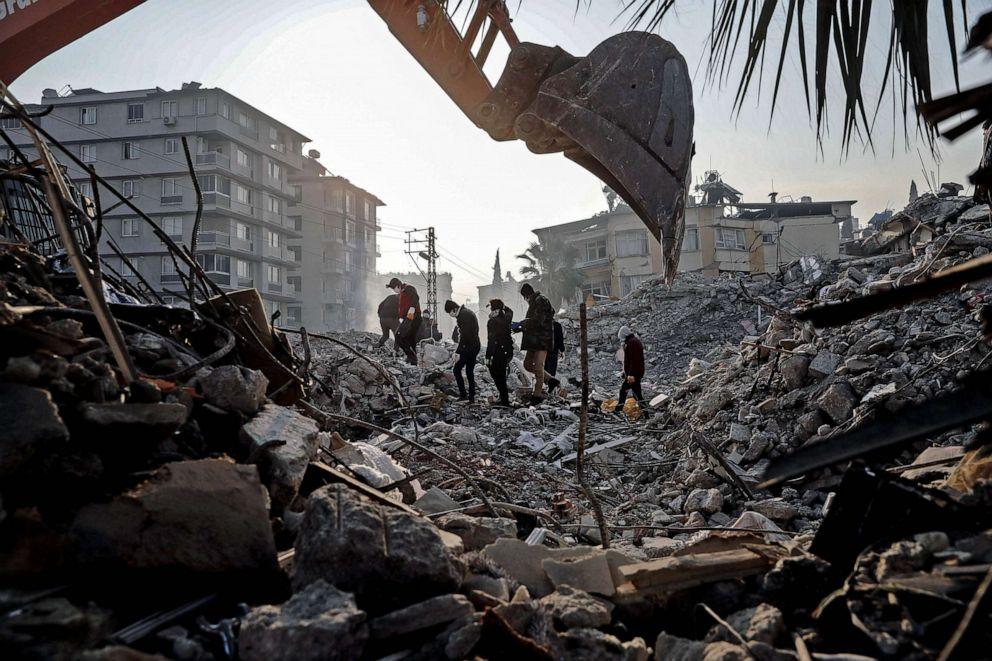By Bansari Mistry
(Photo from ABC News)
On Feb. 6, at 4:17 a.m. local time, southeast Turkey and northwest Syria were devastated by a 7.8 magnitude earthquake on the Richter scale. The earthquake had a depth of 11 miles with over 120 aftershocks recorded in the region during the days following the disaster. The toll of this earthquake has been drastic, with over 23 million people across both countries affected, according to the World Health Organization.
In areas that already relied on humanitarian aid, such as the Syrian city Aleppo, the effects of the earthquake have exacerbated already challenging circumstances. Displaced families are at high risk for hypothermia due to the winter season and waterborne diseases due to damaged infrastructure.
Even prior to the disaster, healthcare facilities in these areas were poorly equipped to adequately care for the population due to continued unrest such as the Syrian Civil War. Now that many of these facilities have been destroyed by the earthquake, the risk of health crises is increasingly high.
Days after the earthquake, the death toll is still climbing. Turkish Interior Minister Suleyman Soylu reported that 39,670 people were found dead in Turkey, bringing the total number of reported deaths to just under 47,000 as of Feb. 21. Search and rescue efforts are still ongoing, with survivors being pulled from rubble multiple days after the earthquake. However, these efforts have been complicated by extreme weather conditions and ongoing political discord in Syria.
International humanitarian aid efforts by the United Nations remain under way. An appeal for $397 million for earthquake aid for Syria was announced, along with an appeal for $1 billion for relief efforts for Turkey, both over the course of three months. After search efforts cease, this money will be allotted towards long-term humanitarian needs and reconstruction of the damaged areas.
The scale of the earthquake aftermath is reminiscent of the 1999 Izmit earthquake in Turkey. Experts have used the 1999 disaster as a point of comparison in evaluating the weaknesses of post-1999 construction in the area. For example, despite the specific construction regulations that were established after 1999 with the goal of withstanding the effects of such a natural disaster, many of the newer constructions still collapsed.
As a country with a history of enduring catastrophic earthquakes, residents are skeptical of the government’s preparedness and response to the earthquake. In response to the rising aggravation, Turkish President Recep Tayyip Erdogan briefly stopped at an area near the epicenter of the earthquake, defending the government response. He mentioned the impossibility of being prepared for a disaster such as this one.
In terms of individual disaster response, training laypeople to respond to such disasters could be an important step towards improving the emergency response. Oftentimes, in disasters of such a scale, trained professionals may not be the first to arrive on scene, and basic rescue efforts by the immediate community could be integral to an emergency response.
Just as rebuilding efforts were coming to a close, as of Feb. 21, at least six people were killed in a 6.3 magnitude earthquake hitting the border of Syria and Turkey on Feb. 20 just after 5 p.m. local time according to United States and European seismological agencies. As per Reuters, Erdoğan has promised to reconstruct the areas rapidly — within a year.






























